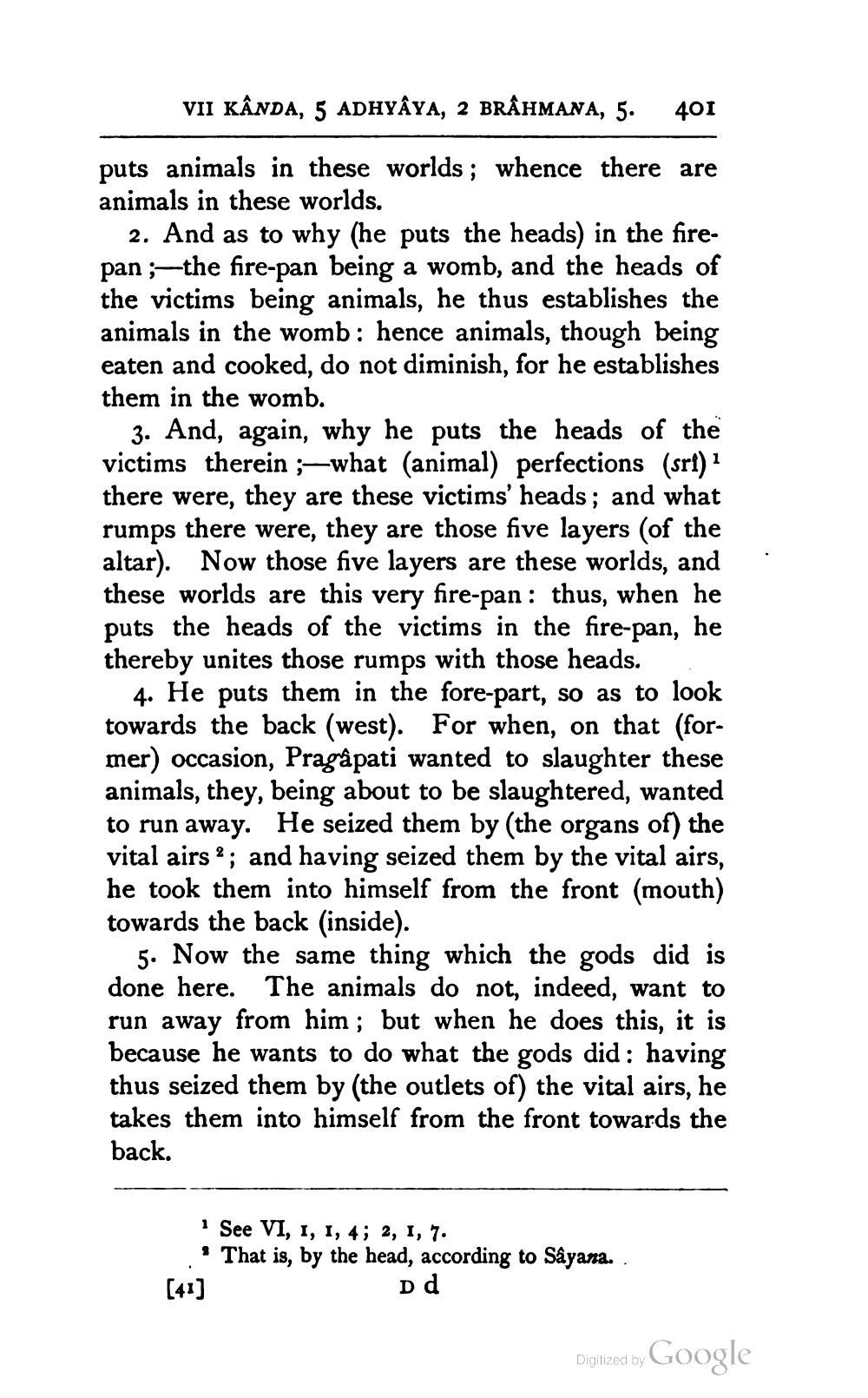________________
VII KÂNDA, 5 ADHYAYA, 2 BRÂHMANA, 5.
401
puts animals in these worlds; whence there are animals in these worlds.
2. And as to why (he puts the heads) in the firepan ;-the fire-pan being a womb, and the heads of the victims being animals, he thus establishes the animals in the womb: hence animals, though being eaten and cooked, do not diminish, for he establishes them in the womb.
3. And, again, why he puts the heads of the victims therein ;—what (animal) perfections (srl) there were, they are these victims' heads; and what rumps there were, they are those five layers (of the altar). Now those five layers are these worlds, and these worlds are this very fire-pan: thus, when he puts the heads of the victims in the fire-pan, he thereby unites those rumps with those heads.
4. He puts them in the fore-part, so as to look towards the back (west). For when, on that (former) occasion, Pragâ pati wanted to slaughter these animals, they, being about to be slaughtered, wanted to run away. He seized them by (the organs of) the vital airs ?; and having seized them by the vital airs, he took them into himself from the front (mouth) towards the back (inside).
5. Now the same thing which the gods did is done here. The animals do not, indeed, want to run away from him ; but when he does this, it is because he wants to do what the gods did : having thus seized them by (the outlets of) the vital airs, he takes them into himself from the front towards the back.
· See VI, 1, 1, 4; 2, 1, 7.
That is, by the head, according to Sâyana.. [41]
Dd
Digitized by Google




